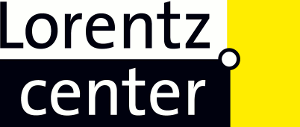Lorentz-Center workshop: Adsorption of Ions at Solid-Electrolyte Interfaces
from 10 Mar 2014 through 14 Mar 2014
|
Solid-electrolyte interfaces are ubiquitous in nature, from the aqueous solution surrounding living cells to brine in oil wells and rock in the ocean. They also play a decisive role in environmental science (in processes leading to ozone depletion, for example) or in technology (water purification and desalination, efficiency of energy storage and harvesting devices). These are a few examples of phenomena finely controlled by the particular arrangement of adsorbed ions at or near the surface of an immersed solid. The arrangement of ions at the interfaces depends on complex and subtle factors such as the nature of the ions (their size, charge, polarizability, hydration…) and the nature of the surface. This is exemplified in well-known phenomena such as “charge inversion”, or processes like “electrofriction”, “ion-specific adsorption” or “ion-ion correlation effects” which are still not fully understood. Understanding of these subtle factors and their interplay require direct molecular or atomic level investigations, which go beyond classical experiments and theories which average over large regions of the interface and disregard their details. Over the last few years, molecular- or atomic-level in-situ and direct investigation of solid-electrolyte interfaces has started to become possible, first owing to some technical improvements in the field of Atomic Force Microscopy (AFM), where direct visualization of single adsorbed ions at the surface of solids has been reported for several systems, but also in computing science where it is now possible to simulate realistic interfaces at the molecular level and over tens of nanoseconds. Also, non-linear spectroscopic techniques could complement these new advances so as to provide the dynamic information inaccessible to AFM. These progresses open important new opportunities for investigating ions adsorption at relevant solid-electrolyte interfaces and derive a deep understanding of the different effects occurring at the nanoscale. For example, fundamental questions related to the solvation structure of adsorbed ions and consequences for their spatial organization and dynamics at the interface are now within reach. Crucially it is becoming possible to test directly and experimentally current molecular dynamics simulations models including atomistic details. Comparison between experimental results and theoretical predictions will make possible to discriminate between solvation forces, ionic correlations or the chemical nature of the solid in problems such as charge inversion and specific ionic effects. The aim of this workshop is to bring together experimentalists and theorists from diverse backgrounds (physics, materials science, chemistry and biochemistry) interested in different aspects of the solid-electrolyte interface to discuss and identify the key opportunities and challenges faced by the field, regarding both fundamental scientific questions and investigation approaches. The goal is to identify specific problems where substantial progress can be achieved and to build up a lasting sense of community, effectively forming a structure for developing collaborations with both short and long-term goals. The workshop places a strong emphasis on discussions and interactions between attending scientists, and only a limited number of talks have been scheduled. Participants are however encouraged to present their research in the form of a poster during the dedicated sessions. |
Practical information about the workshop (description and aim of the workshop, venue, registration form and a list of participants) can be found HERE.

